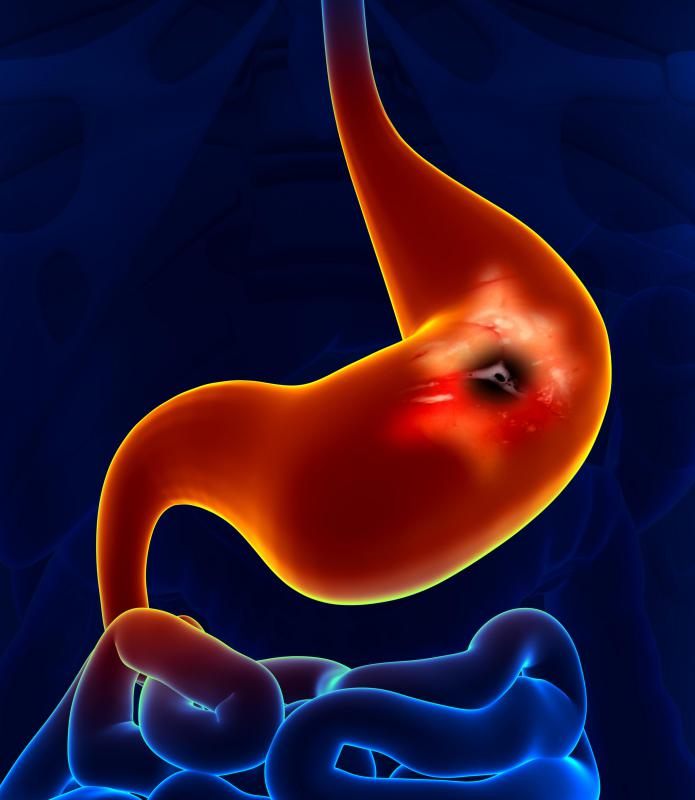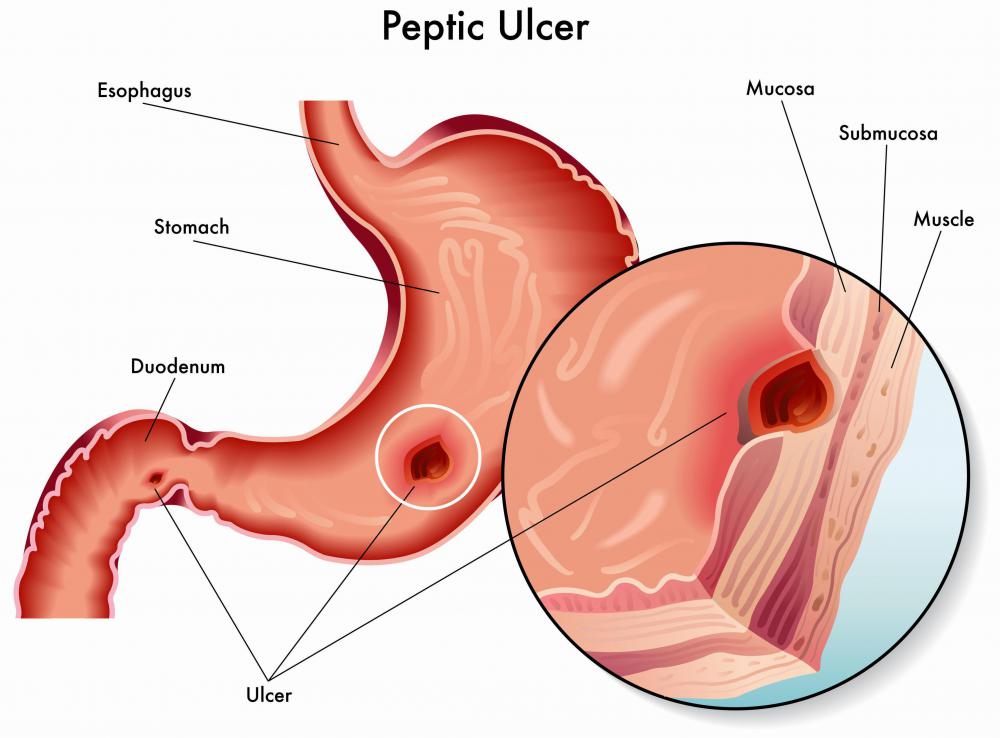At TheHealthBoard, we're committed to delivering accurate, trustworthy information. Our expert-authored content is rigorously fact-checked and sourced from credible authorities. Discover how we uphold the highest standards in providing you with reliable knowledge.
What Is a Graham Patch?
A Graham patch defines a surgical procedure to close an opening in the duodenum caused by a peptic ulcer. The technique is named after a Canadian doctor who successfully used a flap of skin inside the abdominal cavity to repair perforated ulcers. Called the omentum, this piece of fatty tissue hangs from the stomach and drapes into the abdomen, covering the intestines. The omentum is coated with the same membrane found inside the stomach.
Surgeons who perform the Graham patch, also called omentum patch, make an incision through the stomach to gain access to the perforated duodenum. Any acid that leaked into the abdominal cavity is suctioned out. Once the physician finds the damaged section of intestine, he or she threads pieces of suture material through each end of the opening. A Graham patch goes over the perforated area before the untied sutures are brought over the patch and tied. This technique seals the hole to prevent digestive acids and bacteria from leaking into the abdomen.

The duodenum represents the first section of small intestine leading from the stomach. This wide section of the digestive system, shaped like a horseshoe, contains acids that break down food for use as nutrients by the human body. If too much acid exists, a sore might develop, called a duodenal ulcer or peptic ulcer. When the sore eats through the wall of the organ, it might cause peritonitis, inflammation linked to bacteria entering the stomach cavity.

Peritonitis sometimes indicates a medical emergency needing immediate surgery to prevent the patient from going into shock. The Graham patch technique might be performed via laparoscopic surgery, which may prove as successful as opening the abdomen, but generally produces a quicker recovery. In some cases, the Graham patch closes the perforation in an emergency situation, with peritonitis treated afterward with medication.

Most peptic ulcers stem from H. pylori bacteria in the duodenum. Modern medicine led to the development of drugs to eliminate these bacteria and heal peptic ulcers, making the need for Graham patch repair less likely. Lifestyle choices, including the use of cigarettes and alcohol, might also cause ulcers. Stress might increase the risk of developing an ulcer, along with the use of nonsteroidal, anti-inflammatory drugs, such as aspirin and similar pain medication.
AS FEATURED ON:
AS FEATURED ON:















Discuss this Article
Post your comments